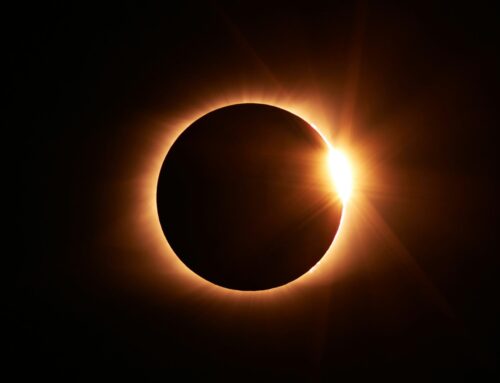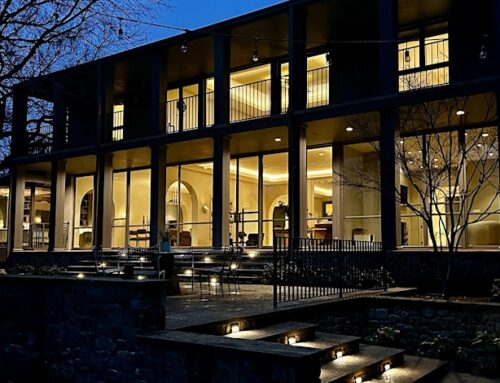On July 12, 1956, Dallas Mayor R.L. Thorton used an over-sized pair of garden shears to cut a royal purple ribbon and, in doing so, made Preston Hollow history.
With this ceremony, Thorton declared the newly developed shopping center at the northeast corner of
.”
Full- page advertisements in the paper invited families to a “Gala Celebration” for the new center. The three days of celebration included a Miss Preston Royal pageant, a political rally and live music from a popular band of the time, the Light Crust Doughboys. Guests were eligible to win bicycles and comic books. The top prize was an all-expense paid trip to
Nearly five decades later, the center, now called the
Today, it occupies both the northeast and northwest corners of the intersection and is often referred to as simply Preston Royal. It is a place where so much has changed, but a great deal has stayed the same.
Had you set out to run an errand at
Mixon started with the two buildings on the south section of the land in 1953. One building housed his office. The other building included a 7-Eleven and a service station. The structure on the north end of the property opened two years later, making space for 10 merchants. In 1956, the building on the east end of the property opened, completing the center and more than doubling its occupancy with 16 more tenants. The two structures are now joined, but at one time a road came between them.
In this smaller version of Preston Royal you would have found a wide variety of shops and services to choose from. The most modern dry-cleaning equipment was in use at
In September of 1959, Henry S. Miller, Jr., and Trammel Crow officially opened the
The Preston Royal Theater, owned by the McLendon theater group, was the first of its kind built in the area since the end of World War II, according to Miller. Tickets to see movies were just 35 cents and soft drinks cost a mere 12 cents. When the theater featured “The Alamo,” crowds filed in. After all of the seats were filled, people sat in the aisles or stood in the back to see the film, says Carol Short, who is now vice president of public affairs for the North Dallas Chamber of Commerce and grew up near the center.
In 1965, Miller and Crow bought out Mixon’s development and the two shopping centers became one. They have been managed by Henry S. Miller Interests ever since.
Miller credits much of the Preston Royal success to the fact that the same mix of shops and services available when the center first opened are still there today.
Short agrees, and thinks that retail anchors such as the post office branch and Tom Thumb, combined with more specialty shops, are what keep people coming back and guaranteeing the center’s success.
“Even people who have moved to other parts of city still come over to Preston Royal to shop,” she says. “Where else can you get a scoop of ice cream and then walk across the street and buy a fur at Lester Melnick?”
Miller believes that Melnick’s store has contributed much to the success of the center. The women’s clothing store, which has been in the center since 1962, not only has loyal neighborhood customers, but also draws people from all over
“The advertising we do brings people from a large area,” says Leslie Diers, president of Lester Melnick. “We also have a lot of out-of town customers that come in to the store because we have been here for such a long time.”
When Diers’ father, Lester Melnick, first opened his store, it occupied about 2,000 square feet. He expanded a year later and opened Young Ideas, a juniors shop. Young Ideas also sold uniforms for The Hockaday School, says Diers. It was at Lester Melnick that the private school wardrobe underwent a change that endures to this day.
“During that time, Hockaday only had a solid green skirt, and my dad found a manufacturer that had a green and white plaid that Hockaday adopted,” says Diers.
Today, the Lester Melnick space has grown to 25,000 square feet and includes Leslie’s, which caters to the young working woman, and LM Furs.
Across
Though new stores have moved in and succeeded, some of the old, long-closed favorites are still remembered fondly, such as the T.G. & Y Dime Store. When Diers tells her children what Preston Royal was like when she was growing up, she tells them about the T.G. & Y. It’s hard to describe what a dime store was, she says, because stores with that type of assortment just don’t exist any more.
“We used to go in there to buy the big, flavored gum balls and the long pieces of red licorice and at the same time that is where I went to buy ribbons for my hair. You could also find thimbles and things for sewing.”
She also likes to tell about Fran’s Lingerie.
“Fran would close her store for the entire month of July every year and put up a sign that read: Gone Fishing,” says Diers. “Who ever heard of such a thing in retail?”
Still other traditions continue despite changes in occupancy. Kids of all ages used to gather at the soda fountain at Dougherty’s Airway Drugs, says Short. These days, soda fountains like those rarely exist. So, on many days after school, private and public school kids alike gather at Starbucks, across the street from Dougherty’s.
And, ironically, people now take movies home from the Blockbuster that occupies the same space the movie theater once did.
In its more than 50 years in existence, there was only one year that
Miller does not anticipate any major changes to Preston Royal in the future. There will always be a little change, he says, but so far his business formula has worked. He wants to continue to make improvements and keep the good tenant mix that has made the shopping center such a significant part of the neighborhood.
Now, the area “north of
” does not seem so vast and many peoples’ preferences tend toward the malls and megastores of our day. But, with its successful past and promising present, the






